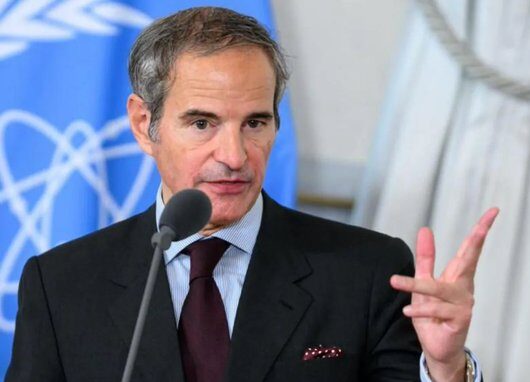Iran retains the capacity to resume uranium enrichment for nuclear weapons within a matter of months, according to Rafael Grossi, Director General of the International Atomic Energy Agency (IAEA). This stark warning comes despite recent US and Israeli military strikes aimed at crippling Iran’s nuclear infrastructure—a campaign that, while severe, fell short of achieving total destruction.
Background: Recent Strikes and Their Impact
In June 2025, Israel initiated a series of strikes on Iranian nuclear and military sites, citing intelligence that Tehran was nearing the threshold for nuclear weapons capability. The United States soon joined, targeting three major nuclear facilities: Fordo, Natanz, and Isfahan. While these attacks inflicted significant damage—particularly to aboveground structures and power infrastructure—they failed to destroy the underground enrichment halls or Iran’s stockpiles of enriched uranium.
Preliminary US intelligence assessments, echoed by the Pentagon’s Defense Intelligence Agency (DIA), indicate that the strikes have only delayed Iran’s nuclear program by a few months, rather than the years or decades claimed by some political leaders, including former President Donald Trump. Trump has repeatedly asserted that Iran’s nuclear capabilities were “totally obliterated,” but both the IAEA and US intelligence contradict this, noting that Iran’s core enrichment capacity remains largely intact.
Iran’s Nuclear Timetable and Capabilities
As of mid-2025, Iran had amassed significant stockpiles of enriched uranium, including material enriched up to 60%—a level that constitutes over 90% of the effort required to reach weapons-grade (90% enrichment). Advanced centrifuge technology further enables Iran to rapidly increase enrichment levels should it decide to do so. According to the IAEA and independent analysts, Iran could theoretically produce enough highly enriched uranium for several nuclear weapons within weeks, though weaponization—the process of turning enriched uranium into a functional bomb—would require additional time and technical steps.
Despite the strikes, much of Iran’s enriched uranium stockpile appears to have survived, with some reports suggesting that Tehran moved critical materials to undisclosed locations ahead of the attacks. Conventional explosives used in the strikes were unable to destroy these stockpiles, particularly if they were stored underground or relocated.
International Reactions and Diplomatic Risks
The international response to the strikes and subsequent revelations about Iran’s nuclear resilience has been one of alarm and caution. European leaders and the United Nations have called for renewed diplomacy, warning that further escalation could destabilize the region and undermine the global non-proliferation regime. UN Secretary-General António Guterres described the situation as a “perilous turn,” emphasizing the urgent need for dialogue to prevent a wider conflict.
Within Iran, officials maintain that their nuclear program is for peaceful purposes, though the country has consistently asserted its right to enrich uranium on its own soil. Iranian authorities have condemned the strikes as violations of international law and have signaled their intent to rebuild and continue nuclear activities.
IAEA’s Warning and the Path Forward
Rafael Grossi’s assessment is unequivocal: the damage to Iran’s nuclear facilities, while serious, is not irreversible. Iran retains the scientific expertise, technological infrastructure, and material resources to resume enrichment activities at will. Should Tehran choose to restart its program, it could begin producing weapons-grade uranium within months—a timeline that underscores the fragility of current containment efforts.
The IAEA has called for immediate diplomatic engagement, warning that failure to do so could result in “unthinkable” consequences, including the potential collapse of the international nuclear non-proliferation regime. As the world watches, the prospect of a nuclear-armed Iran remains a pressing and unresolved challenge, with the window for effective diplomacy rapidly narrowing.

